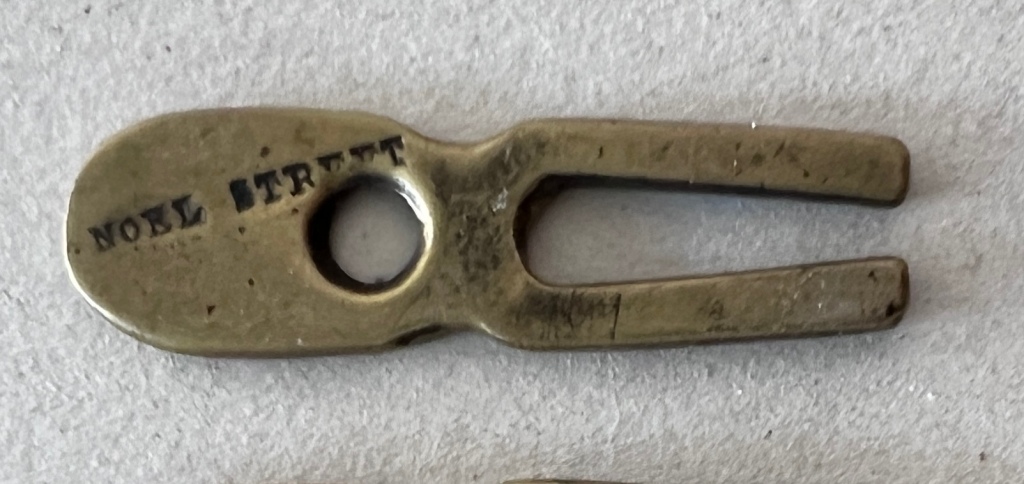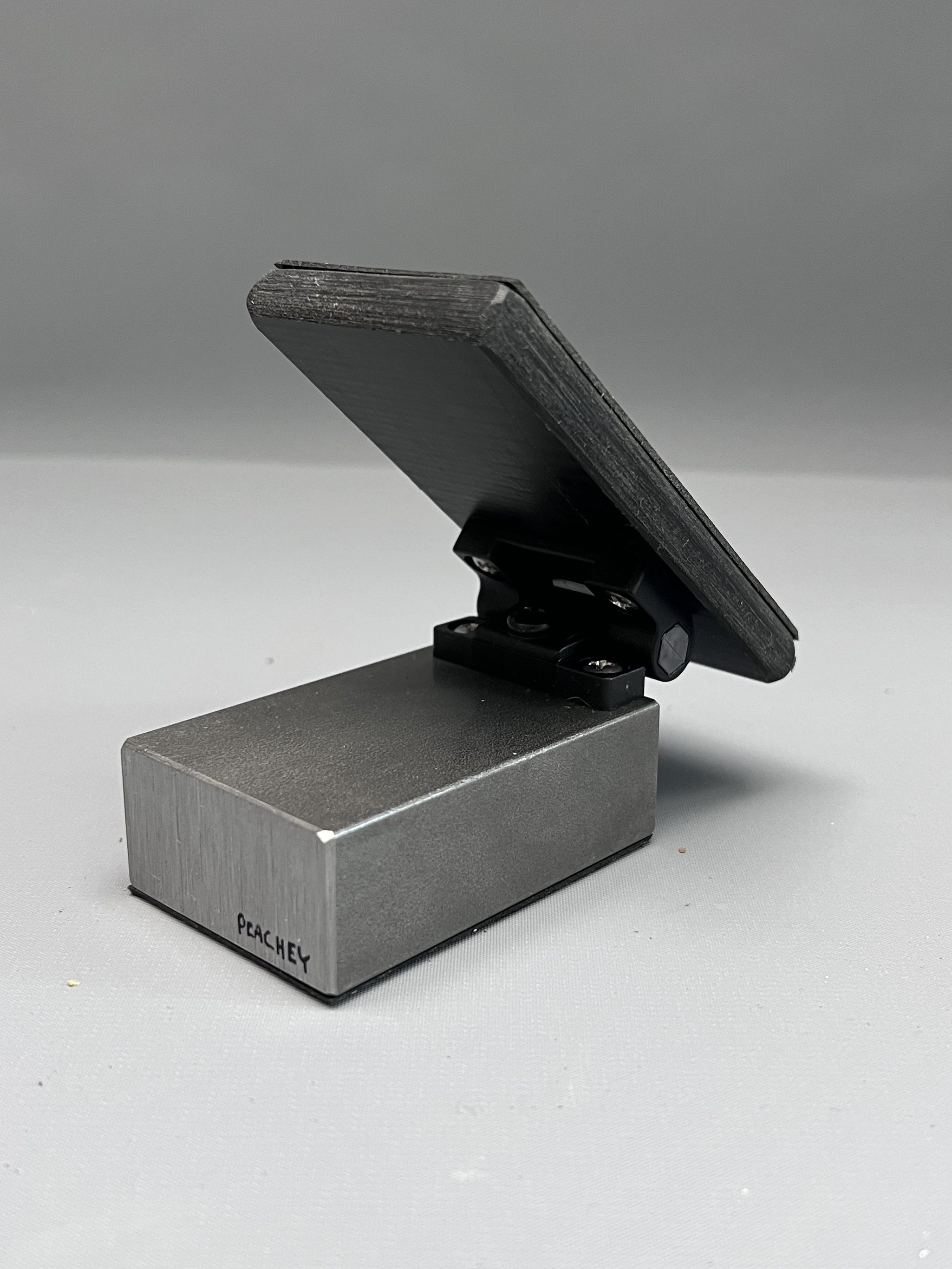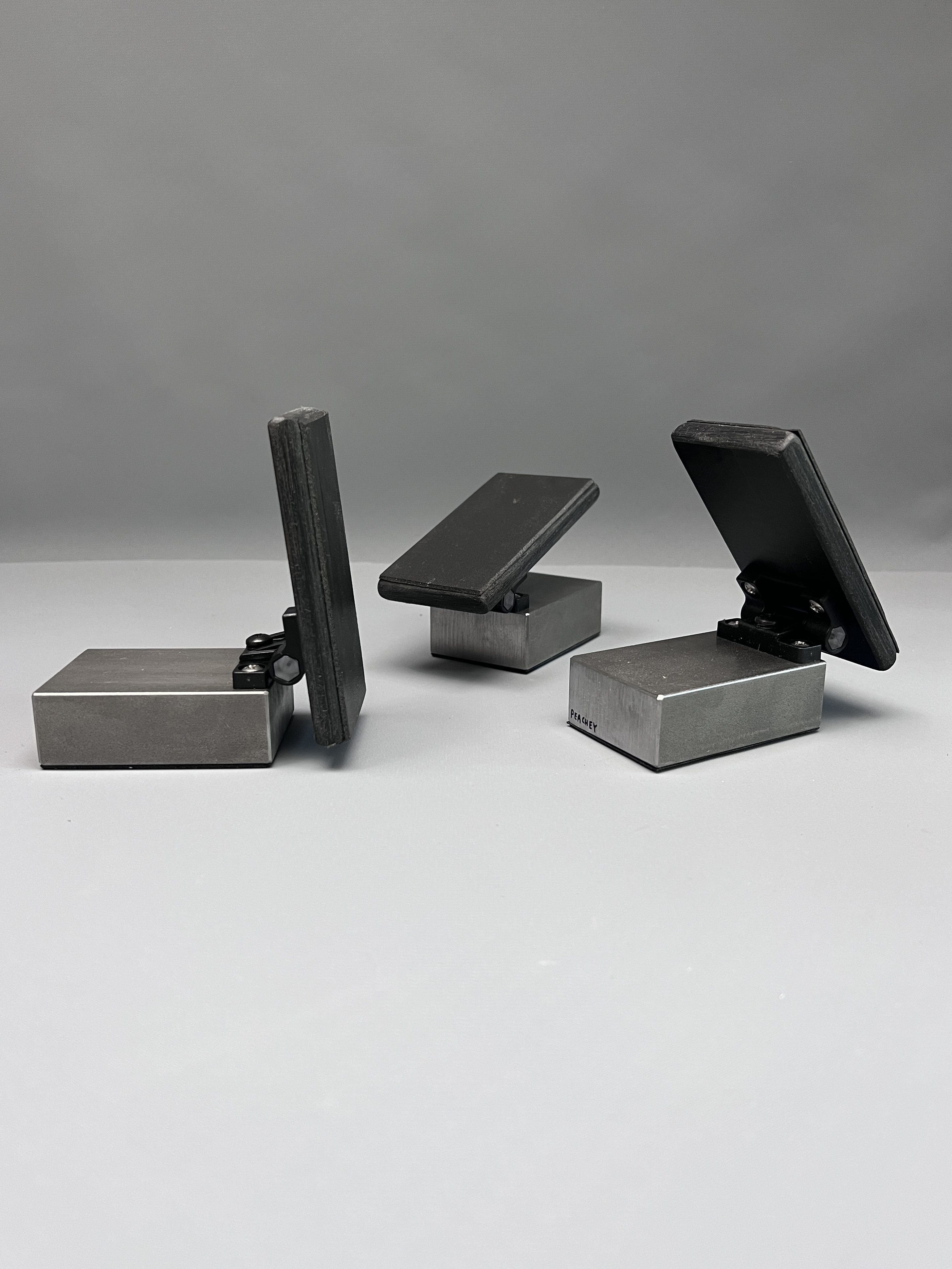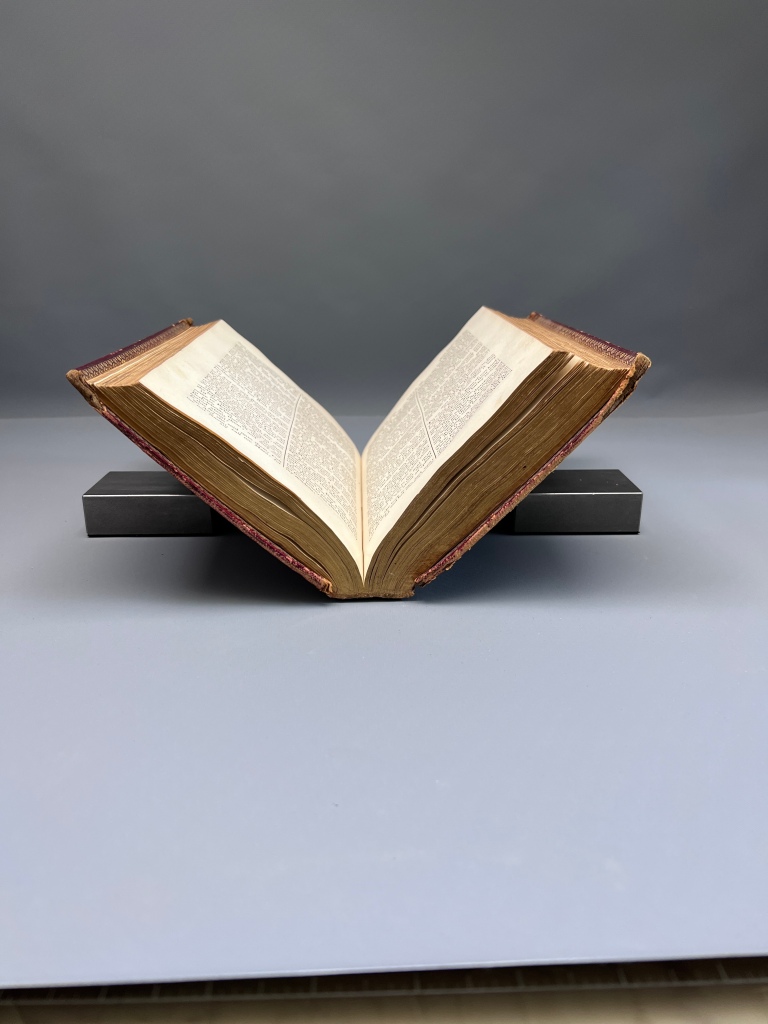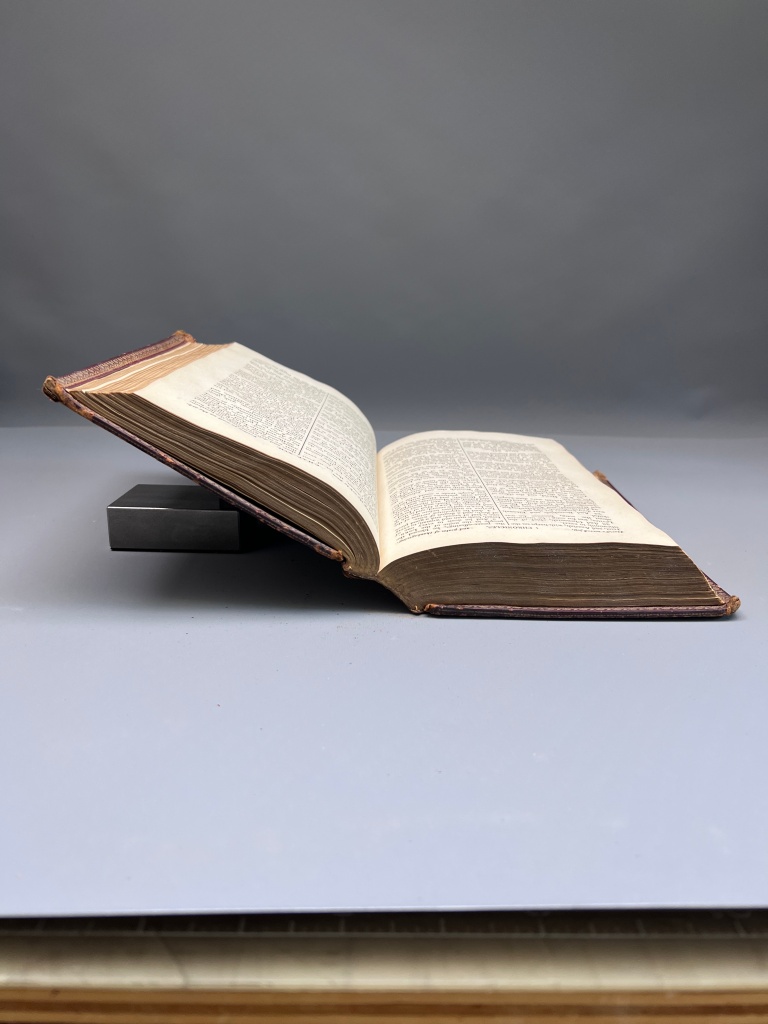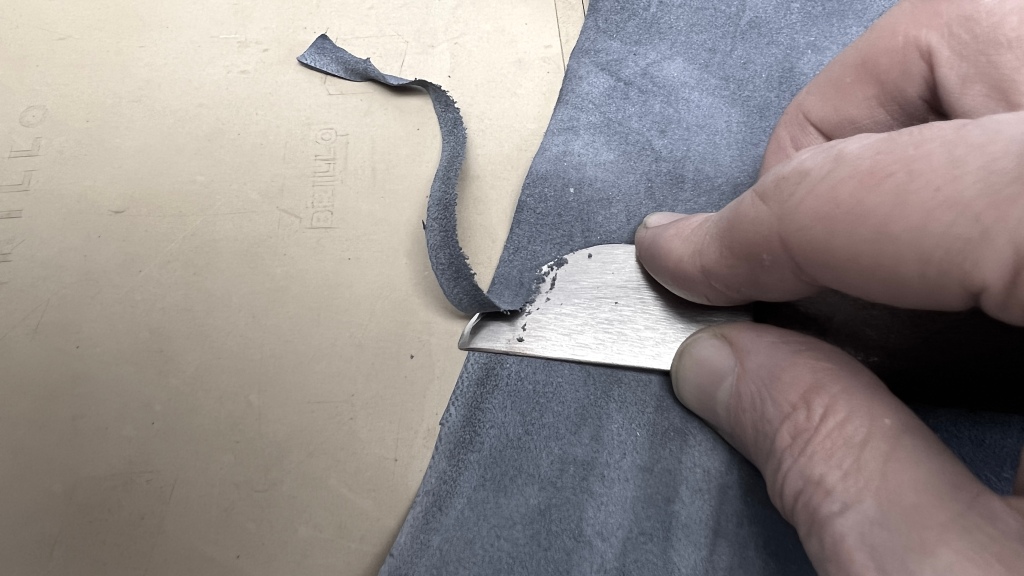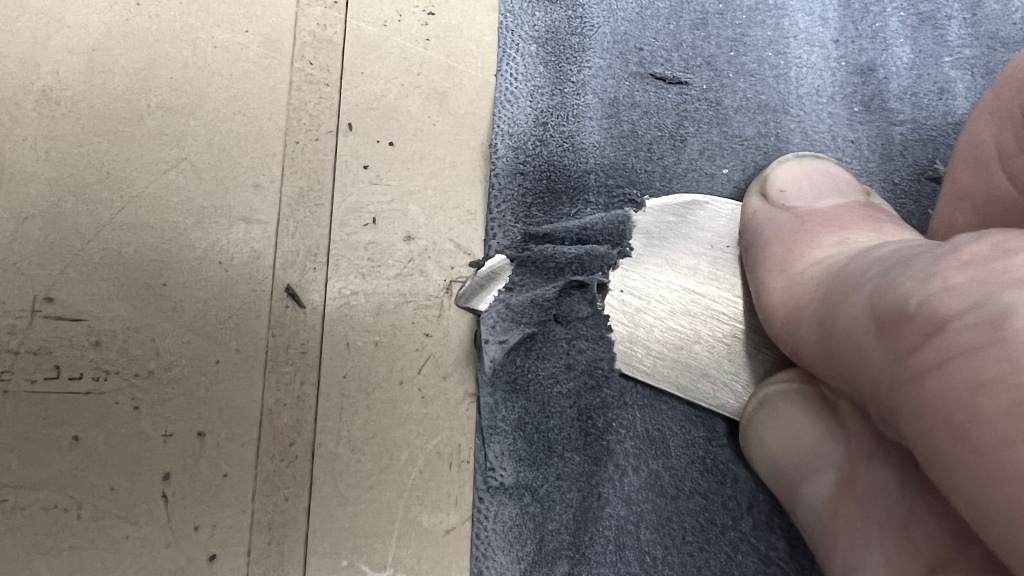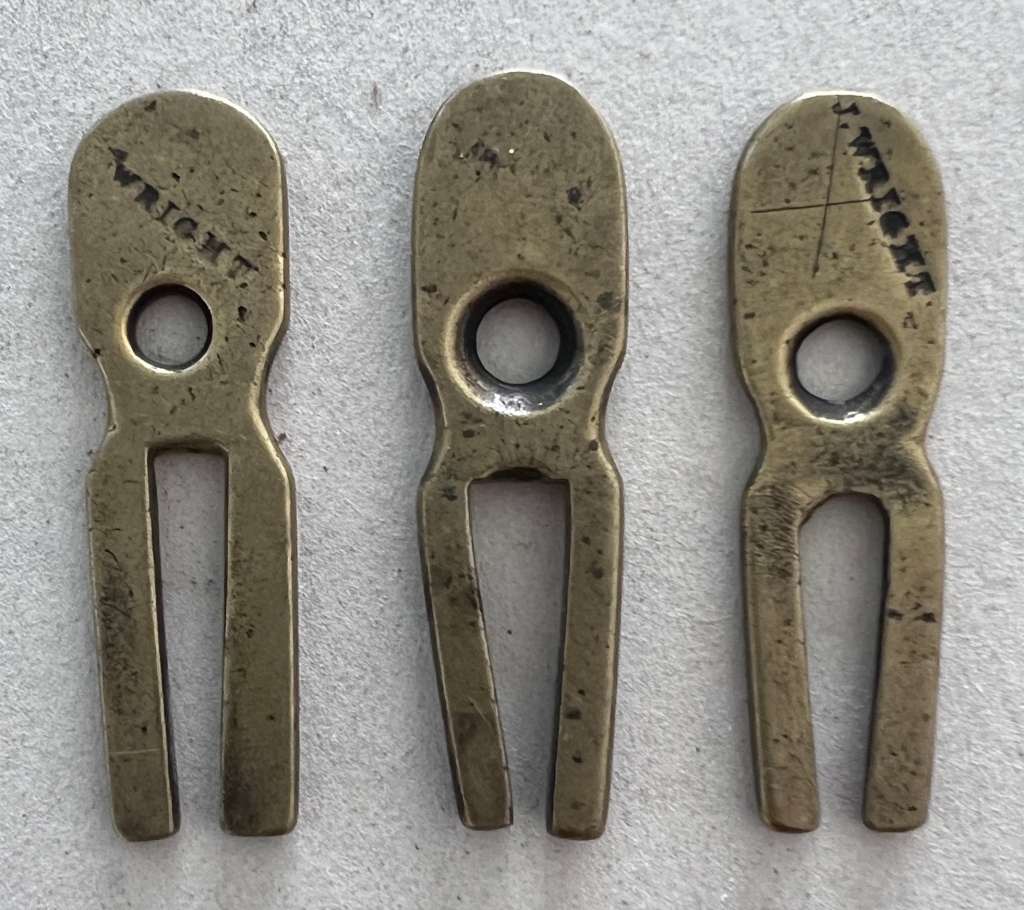
By Tom Conroy
The very way to gain a taste
For eating glue and spoiled paste…
Then back to live in grimy rooms,
As cold as eyes, as small as tombs,
And, writhing, die before you oughter
Like Wright and Wickwar, of Broad Street water.
—–Struwwelbinder
PRELUDE
In late August 1854, cholera again visited London, as it had in 1832 and 1849, and it settled down for a good long stay in Soho. Victims leaked fluids grossly and continuously, but if they drank water—-or gin—- it didn’t help them or ease their misery. The special horror of cholera was enhanced by its irrationality: it never attacked everyone, but it might attack almost everyone in an area a block square. Or it might checkerboard an area, or it might spare all the residents of a house —-except for those in one room. No one understood why or how it chose where to strike. Diseases were miasmas, air-borne, weren’t they? A miasma should attack everyone. By the time the cholera moved on, a quarter of the people who caught it had died.
Be patient. This is, I assure you, a posting about bookbinding history, or at least about bookbinding tools. But you will have to wait a bit.
John Snow, a local doctor, had studied the nature of cholera during the 1849 outbreak. He went house to house and room to room, questioning the sick, the recovered, the people who never caught it. He asked about where they went, where they worked, where they played. He asked who they met. He asked what they drank and what they ate. He asked about the days that they, and their dead, had caught the complaint, asked when others around them caught it, asked about the days of the week and the phases of the moon. By the end he had put together, and later published, a remarkably detailed account of the people of the district and how they acted. And still cholera was irrational, not to be predicted, impossible to understand.
But Snow had noticed something, and he had a theory. Water was run in pipes to houses and to businesses, and in Soho the pipes were filled and maintained by competing private companies. They competed on clearness and on fresh taste, and on price. It seemed to Snow that cholera loved to attack people who drank or used water provided by the Southwark and Vauxhall Water Company, which drew its water straight from the Thames in London, where it was filled with the filth of the city; but cholera avoided those who used the water of the Lambeth Waterworks Company, which piped its water from the Thames above London where water was relatively clean. Snow documented this, case by case and house by house and business by business. To those willing to look at his data, he had proved that, whatever actually caused cholera, it was water-borne. It was carried by fouled water.
He had a demonstration more vivid in his hand, and something useful to be done: in 1854 he found that the cholera outbreak was most ferocious among people who used a public pump which sat on top of its own well outside 39 Broad (now Broadwick) Street, a few steps down from Number 63 where Bernard Middleton would set up his first bindery a century later. There were a dozen of these public pumps in Soho. At most times water from the Broad Street pump was known for clearness and good taste: it was not hooked into the piped water system, and did not draw from the Thames, but had its own well sunk deep into the gravel aquifer. Its well, however, was only three feet from a shallow over-used cesspit that overflowed from time to time. Snow thought that when the cesspit overflowed, the “cholera poison” was carried from it down into the well water. With his evidence in hand, Snow went to the Board of Guardians of St. James’s Parish on September 7 and asked them to chain up the Broad Street pump. At first they refused. Snow was not a good speaker. Perhaps they made it clear that they would laugh at him, except for the pile of the dead waiting to be buried. Cholera was a miasma, wasn’t it?
The official story— Snow’s own story— is that Snow finally convinced the Guardians, and they shut the well down the next day. They reopened it later, when the epidemic had passed (cholera was a miasma, air-borne, everyone knew that). My imagination sees something else happening.
Doctor John Snow was a Victorian. I think he walked over to Broad Street, took off the handle and chained up the pump himself, and took the handle home. Many secondary sources say flat out that he did so. The outbreak was already dying down on Broad Street because three-quarters of Soho’s residents had already fled the district; but disabling the pump turned off the cholera like water from a tap. The whole outbreak lasted less than ten days, but in that time 610 people had died, 127 of them on Broad Street.
John Snow’s action on Broad Street, whether the bit of idealistic vandalism of my imagination or the staid, slow, respectable movement through official channels of the public story, is now considered the origin of the sciences of epidemiology and public health, and it only took thirty or forty years before people realized that he had done something good. In his own day he gained more fame as Queen Victoria’s first anesthetist. In 1853 she wanted ether, Snow wanted to give it to her, and the Queen of England had enough clout to brush aside the medical establishment’s ideas about natural childbirth and God’s blessèd pain.
THE KEYS.
No one else will die of cholera in this essay, beyond those who got it in 1854.
On the morning of October 7, 2006, San Francisco-area bookbinding teacher Anne Kahle was one of the first through the door at the sale of binding tools, materials and books from the estate of Joanne Sonnichsen. Anne was born in England and trained by Arthur Johnson, and in 1960 she was one of three prize winners in the 26-and-younger section of the Thomas Harrison Memorial Competition (the predecessor of The Bookbinding Competition); but her career as a design binder had a big setback when her father took a faculty position at the University of California and she moved to Berkeley with her family. By 2006 she had been teaching English-style bookbinding in Berkeley for almost forty years. Joanne Sonnichsen was a design binder of international activity and reputation, well known and respected in France, who had been an early adopter of innovative and historically inspired book structures. She was trained in San Francisco’s French-derived bookbinding tradition, and was a Francophile in all things. She and her husband kept a flat in Paris and spent part of each year there. In France she had spent much of her time trying to explain the new American bookbinding to the French—-in America she taught traditional French technique and standards to Americans.
At Joanne’s estate sale, the first table Anne looked at had a heap of several dozen sewing keys, with something a bit odd about a few of them. Anne, long practiced in flea markets, yard sales, and (in her youth) boot sales, scooped up all the keys without a second glance, bought them all at the asking price, and didn’t look at them again until she got home. A binding teacher always needs sewing keys, she says, and the dozens of common modern keys were bound to be useful as well as making excellent cover for whatever she had seen.
But just what had she seen? Three keys a lot bigger and fatter than modern ones, and a bit blodgy, not excessively straight or precision-ground. Heavy. Cast brass, not stamped, shined up recently by a neat freak with a buffing wheel, but looking—-old. Very old.

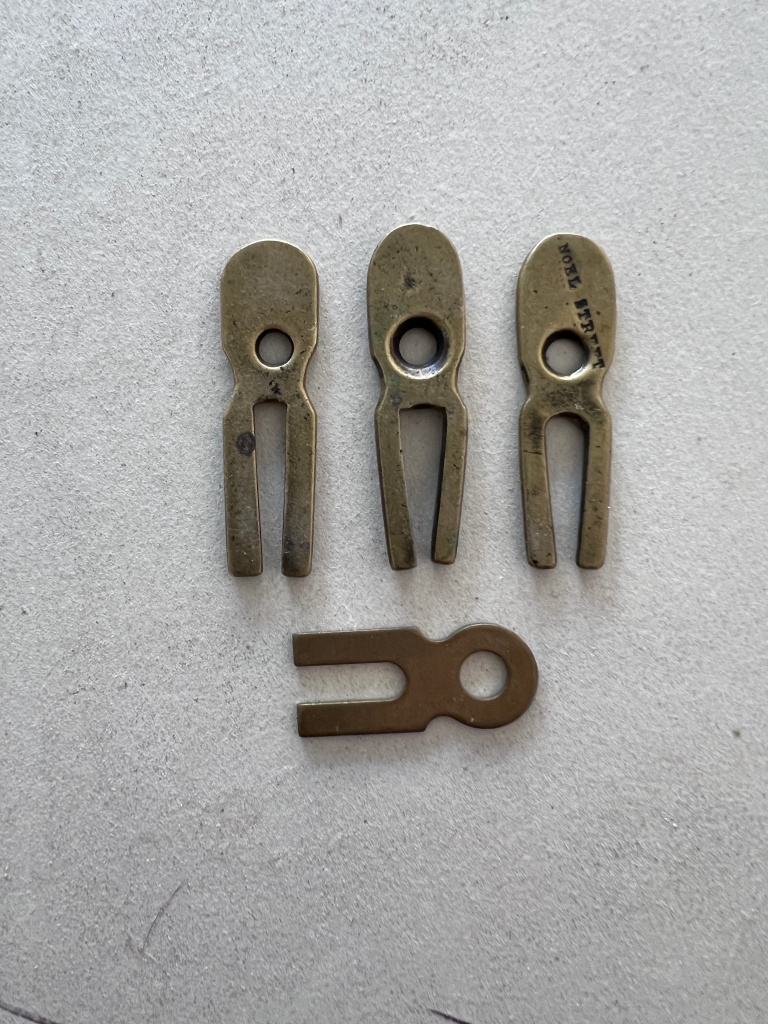
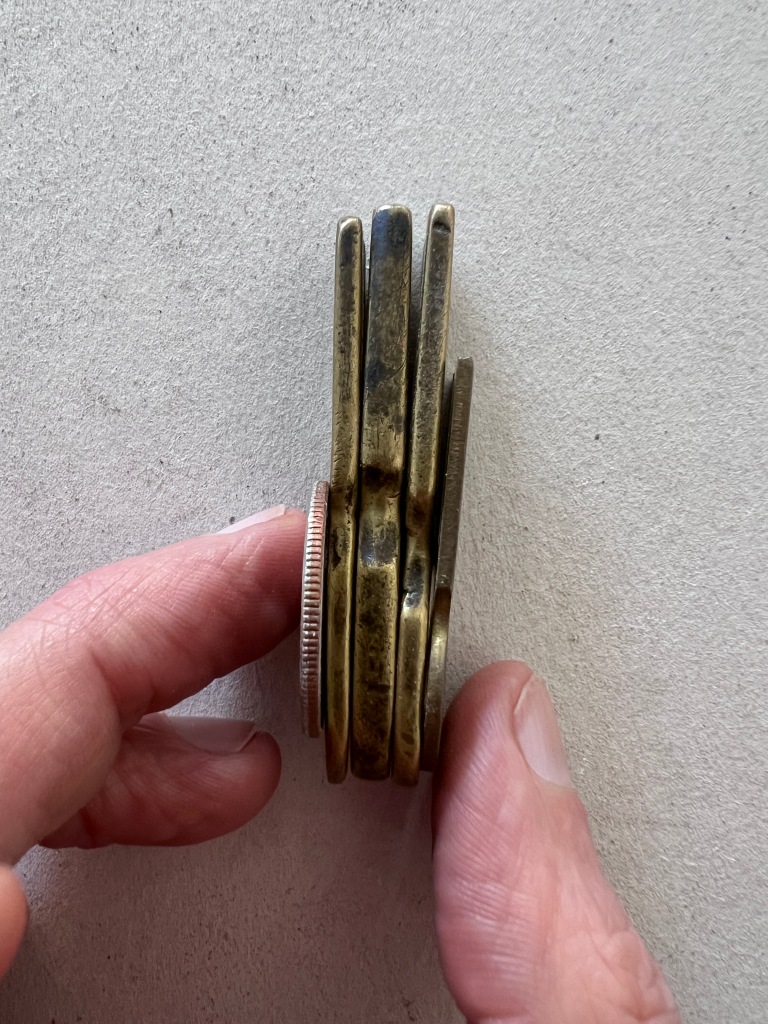
Dating small bookbinding tools is rarely possible because there are few pictures of them before the 1880s, and the early pictures were reused in catalogues and manuals for many decades to avoid the cost of engraving new ones. But these newly acquired sewing keys might be datable, I thought when I saw them, because they were marked “J. Wright” on two of the six broad flats, “Noel Street” on another. English language. No city, that probably meant London, “the flower of cities all,” the default, the center of gravity. Ownership mark or maker’s mark? We’ll see. To find out when and who J. Wright was, meant checking the London city directories (“Kelly’s Post Office London Directory”) year by year through the 19th century to see if a J. Wright would turn up on Noel Street, if there was a Noel Street. The slog began. He was there, in Soho, in the 1840s and early 1850s all right, down through 1854. Then he was out of the directories for a year. Was this a terminus ad quem, an upper bound, a before-which-limit to his dates of activity? In 1856 there was no John, but an address for his estate and for his widow as executor. Definitely a limit! And then…
Something familiar about the name Wright… and 1854…. eventually it came together by increments so small that I barely noticed the point when I remembered what I already knew.
Between August 31 and September 8, 1854 bookbinders John Wright of Noel Street, Soho, John Wickwar of nearly Poland Street, and, my flickering memory told me, twenty-seven members of their staffs and families caught or died from cholera. By the documents, five employees of Wright’s died with him, three with Wickwar. John Wickwar’s infirm mother now lived in another part of London, but she liked the taste of water from the Broad Street pump; when Wickwar’s brother William came into town to see his dying brother (he came too late) he had made a special effort to bring her some Broad Street water after his visit. She died of her little treat. So did William. Those sewing keys had a terminus ad quem all right, in spades.
CODA
I dreamed I saw Joe Hill last night
As big as you or me,
I told him, “Joe, you’re ten years dead.”
“I never died,” said he.
“I never died,” said he.
We like, we humans, stories with endings. Some endings are happy, some not; but drawing a black line of death under the stories of two commonplace London bookbinders has a narrative cogency that—-isn’t at one with all the facts. John Wright and John Wickwar and dozens of their friends and families may have had their own lives truncated, but the stories go on. Once you start to look for that terminal black line, it runs from you, in little spurts, in gaps in the narrative, in unexpected facts that start stories all their own.
Ten years ago Philippa Marks, preparing her own essay on bookbinders and the Broad Street Pump, searched for the outbreak’s consequences in the great John Jaffray Collection of primary-source documents and ephemera on English bookbinding. She learned that despite the disappearance of—- “all my pretty chickens and their dam” in the great outbreak, despite the death of Wickwar’s mother and brother and his cheeping workers, and despite Wright’s grieving widow having to act as his executor because, the imagination says, no one else was left alive to do the job, despite all setbacks, both businesses recovered after 1854. I wonder: How?
Wright and Wickwar were not commonplace trade binders scratching out meager livings in decrepit, run-down Soho, as I imagined when I wrote Struwwelbinder. Maurice Packer’s directory Bookbinders of Victorian London shows that by 1854 Wright’s bindery used four buildings on one block of Noel Street, Nos. 14-16 and 21. “Three addresses always inspire confidence, even in tradesmen,” said Lady Bracknell. Charles Ramsden, whose terse directories almost never give three words of English prose to anyone, says that he was “A binder of the highest order but in the main falls outside our period.” (London Bookbinders 1780-1840). This praise was not unmerited.

In August, 2023 the rare book dealer Philip Pirages offered a shockingly intense, no-shortcuts, glittering binding by Wright, one volume of a two-volume set whose other was lost when being shipped to Pirages. There’s a story that is working itself out somewhere, leaving a measure of sorrow for lovers of fine bindings. There is other estimable work by Wright in the British Library’s Database of Bookbindings. Wright’s business remained at 14–16 Noel St. until 1863; in 1864 it was replaced by another bookbinder, Walter S. Hammond, who traded there until 1887. The site was leveled in 1897 to make way for the French Protestant School; which in turn was closed in 1939.
And Wickwar! Things to be told seem to cluster around him, then to retreat from study like water from the lips of Tantalus. Wickwar was able to turn out an intense bit of glitter, a plate in Ramsden shows it. But John Wickwar, who seems to have begun life as a papermaker in his father’s mill, turned from pure bookbinding to making leather-covered despatch boxes for the British government—the iconic “Red Boxes” that are given to all new cabinet ministers, that appear in pictures of the Queen, that the Chancellor of the Exchequer waves in the air to signify that the year’s budget is ready. Most bookbinders make boxes from time to time. Wickwar’s made a “red box” for William Ewart Gladstone in, it would seem, 1853. I wonder if the journeyman who made it died in the outbreak? Gladstone’s budget box remained in use until 2010, and looks it: the red ram’s skin covering is shabby with the handling of 51 chancellors. May all our work endure to be so shabby! Wickwar’s made a red box for Prince Albert (probably) around 1860 (probably). Wickwar’s made a red box for Winston Churchill; that one was sold a few years ago for £160,000. And Wickwar’s are still in business today, still making red boxes (and little else, it seems), and deadly quiet about themselves in the classic British manner.
As best I can tell from primary sources that Philippa Marks assembled, after the year of the cholera the Wickwar bindery at 6 Poland St. was taken over by John’s brother Francis; old John’s nephew John found room to set up his dental office in the underpopulated building— a grim aftertaste to the disease. After Francis the firm was inherited by Francis’ grandson Arthur Spain. Wickwar & Company was still, according to Packer, at 6 Poland Street in 1897, a few years after the site was rebuilt or at least refronted with a great expanse of large glass windows which would be ideal for a bindery if only they faced north (they don’t). At some point Wickwar’s was at 98 Jermyn Street (it is not clear if this was in addition to or after the Poland Street location) amid many posh haberdashers, a location which would have been good for selling dressing cases and other boxes; so the shift in products is hinted at by the new address. I lose track of the company for the whole twentieth century, until it pops up today with a tight-lipped website with lots of words but little real information. It is probably at least a century since anyone asked them to bind a book. A big stream of Wickwar’s murky loss to the bookbinding world disrupts my neat black line under the London cholera outbreak of 1854.
And, in a very small rivulet of unfinished-story-ichor, somehow three blodgy, oversized sewing keys took a century and a half to find their way from England into the bindery of a Francophile American design binder, and were sold on her death with their patina scrubbed off the brass and their histories lost. The keys are sitting by me on my bench, on loan from their owner for seventeen years while I was supposed to be writing a brief note for publication about them. I ought to get them back to Anne Kahle now that the note is written. But there are still all those stories to look into. And I still haven’t figured out just what I might learn about the technique of Victorian bookbinding from the sewing keys.
BIBLIOGRAPHY
Readers perceptive in the ways of books will realize that this is a rapidly-constructed ruminative essay, relying heavily on memory rather than meticulous research. The London cholera outbreak of 1854 was just one incident in the larger pandemic of 1846–1860, and it was a key step in the development of modern medicine. Literature relating to is very extensive indeed (at least seven significant books on it have been published in the last twenty years) and I have barely scratched it. This list includes the sources known to me concerning the bookbinders overtaken by the epidemic; some but not all of the general sources used in writing this essay; and some works that will suggest lines of investigation that I have not followed.
Numbers given here are approximate. Every source I have looked at gives specific counts for all the statistics, but in every source the numbers differ slightly, right back to Snow himself. For good reason. At times Snow’s statistics are for Broad Street, at times for the Pump’s area of distribution, at times for Soho, at times for all of London. At times he is comparing deaths, at times cases. At times he is looking at the whole time of the Broad Street outbreak, at times new cases during the outbreak, at times deaths during the outbreak, at times cases that started during the outbreak but ended in death much later. Snow kept this all straight and was explicit about what went with what, but not all students have had the patience to follow him in detail through the pages through which one of his lines of reasoning will play out; nor, at times, do I. The numbers I give in this essay are good enough for book arts.
T.C.
Marks, Philippa. “John Snow saves Soho bookbinders.” (British Library) Untold Lives Blog (15 March 2013): <https://blogs.bl.uk/untoldlives/2013/03/john-snow-saves-soho-bookbinders.html>; accessed October 2, 2023.
Middleton, Bernard. Recollections: A life in bookbinding. New Castle, Delaware and London: Oak Knoll Press and The British Library, 2000, p. 35.
Packer, Maurice. Bookbinders of Victorian London. London: The British Library, 1991.
Ramsden, Charles. London Book Binders 1780-1840. London: B.T. Batsford, 1956. (My copy of this book was bought at Joanne Sonnichsen’s estate sale).
Snow, John. On the Mode of Communication of Cholera. 2nd. ed. London: John Churchill, 1855: <https://archive.org/details/b28985266/page/n3/mode/2up?view=theater>; accessed October 2, 2023. The Broad Street Pump outbreak is discussed on pages 38–55.
Vinton-Johansen, Peter. “Bibliography (Unpacking Essays).” to Cholera in St. James: Experiments in narrative history, historiography, and more…; <http://johnsnow.matrix.msu.edu/broadstpump/bib/>; accessed Oct. 12, 2023. “This [web]site is now undergoing reconfiguration and reconstruction, reflecting a shift in priorities since (1) the publication of Investigating Cholera in Broad Street (a documentary source book); and (2) current preparation of a video series featuring the 1854 London cholera epidemic…”
“Broad Street Cholera Pump.” Atlas Obscura:The definitive guide to the World’s Hidden Wonders: <https://www.atlasobscura.com/places/broad-street-cholera-pump>; accessed October 12, 2023.
” D’Arblay and Noel Street Area.” BHO| British History Online (Survey of London): <https://www.british-history.ac.uk/survey-london/vols31-2/pt2/pp230-242#h3-0014>; accessed October 10, 2023. Most of Noel Street has been demolished and modernized, including Wright’s premises at No. 14, 15, and 16 ; but the Survey has a plan and elevation of the recently demolished No. 11, which was probably similar.
“Poland Street Area.” BHO| British History Online (Survey of London): <https://www.british-history.ac.uk/survey-london/vols31-2/pt2/pp243-249>; accessed October 10, 2023.
“The Despatch Box.” Wickwar Est. 1750: < https://wickwar.com/>; accessed October 11, 2023.
“Welcome to the John Snow Society.” The John Snow Society: <https://johnsnowsociety.org/>; accessed October 12, 2023. Especially important as a bibliographic starting point.
“Will of John Wright, Bookbinder of Soho, Middlesex.” The [British] National Archives: < https://discovery.nationalarchives.gov.uk/details/r/D47189>; accessed October 10, 2023.
Wikipedia entries consulted include “Despatch Box”, “Red box (government),” “Broad Street Cholera Outbreak,” “Barrow Hepburn & Gale,” etc.
FOR BERNARD MIDDLETON
“First of us all, and sweetest singer born”
who I never knew well, but who I miss very much,
never more constantly than while writing this essay.
ACKNOWLEDGEMENTS
I am indebted to Phillip Pirages for permission to use the photograph of John Wright’s binding on Dresses and Decorations of the Middle Ages vol. 1 (London: William Pickering, 1843); to Philippa Marks for sending her research notes and primary materials on John Wickwar and his family, for reading this essay in draft, and for general support; and to Jeff Peachey for photographing the John Wright sewing keys, for making space available on his website, and for coming up with a title that made the rapid writing of the essay inescapable.
Tom Conroy is a bookbinding historian and retired book restorer, toolmaker, and fine binder in Berkeley, California. His memory stretches back to the long-lamented Great Craft Revival of the 1960s, in the days when dinosaurs walked the earth.
